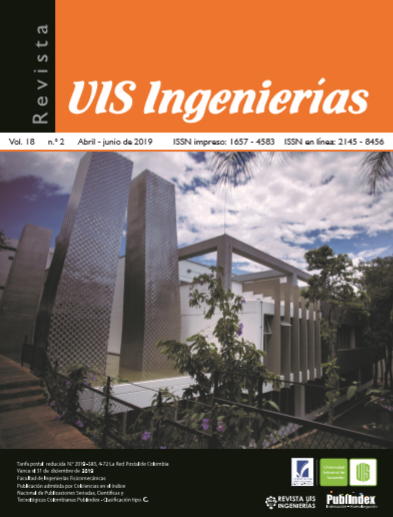Infinite chain of atoms and Coulomb chain: tight binding method
Published 2019-02-14
Keywords
- Tight Binding,
- Schrödinger’s Equation,
- infinite chain,
- coulomb chain
How to Cite
Abstract
The solution in quantum mechanics for systems in which the Hamilton operator is not time-dependent (stationary states) focuses on the solution of the Schrodinger equation independent of time. However, when the system becomes one with many particles, the solution of the equation cannot be addressed by analytical means. Therefore, there are several methods of approximate solution; these fall into two broad categories: the numerical and the self-consistent. The essential difference lies in the process that must be followed to find those solutions. Among these methods, one that is widely applied to problems with many particles is the so-called Tight Binding (Hold Strong) as it allows some freedom of programming and tracking algorithm besides having very good approximation margins. In this article, an overview of the method and its application to three specific problems (set of linear loads and Coulomb potential) will be provided. These two systems will be developed for three main reasons. The first is associated with the simplicity of the process and clarification of the method, the second is related to the utility of practical application of the physical model in engineering such as integrated circuits, resistance alternators and other complex systems, and the third is because in some references a comparison is made with alternative (usually self-consistent) methods to very similar problems.
Downloads
References
A. Szabo, N Ostlund, Modern Quantum Chemistry. New York: Mac-Graw Hill, 1996.
M Ascrofth, Solid State Physics. London: CPI Group, 2013.
Nouredine Zettili, Quantum Mechanics: Concepts and Applications. Chichester: John-Wiley, 2009.
L. Ballentine, Quantum Mechanic Modern development. London: World Scientific, 2005.
J. C. Slater, Quantum Theory of Atomic Structure. New York: Mac-Graw Hill, 1989.
J. J Sakurai, Modern Quantum Mechanics. London: Cambridge University, 2017.
R. K. Pathria, Statical Mechanics. New York: Pergamon Press ed., 2011.
K. Huang, Statical Mechanics. Ontario: John Wiley and Sons, 1987.
N. March, Many-body Problem in Quantum Mechanics. New York: Mac-Graw Hill, 1996.
R. Shankar, Principles to quantum mechanics. New York: Springer, 1998.
H. Ilback, Solid-State Physics: An Introduction to Principles of Materials Science (Advanced Texts in Physics). New York: Springer, 2003.
H. Høgaasen, J.M. Richard, P. Sorba, “Two-electron atoms, ions, and molecules,” Am. J. Phys., vol. 78, no. 1, pp. 78-86, 2009. doi: 10.1119/1.3236392
W. Kohn, “Density functional theory: fundamentals and applications”, Highlights of Condensed Matter Theory, no. 2, pp. 1–15, 1985.
F. Mandl and G. Shaw, Quantum Field Theory. New York, Wiley-Interscience, 1984.
D. Gamermann, tesis doctoral, Universidad de Valencia, 2010.
E. Abreu, J. Pérez, A. Santo, “Lagrangian-Eulerian approximation methods for balance laws and hyperbolic conservation laws,” Rev. UIS Ing., vol. 17, no. 1, pp. 191 - 200, 2018. doi: 10.18273/revuin.v17n1-2018018

